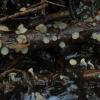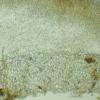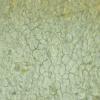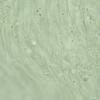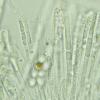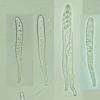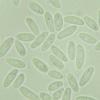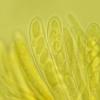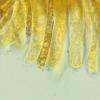
21-12-2025 09:32
Hello.A tiny ascomycete found embedded in wood in

21-12-2025 21:32
Pol DebaenstHello, Garden, Burgweg 19, Veurne, BelgiumOn 10/1

22-12-2025 23:38
Patrice TANCHAUDBonsoir, récolte sur un mur en pierre, apothéci

22-12-2025 00:47
Patrice TANCHAUDBonsoir, récolte à proximité du milieu dunaire

21-12-2025 21:40
Isabelle CharissouBonjour, j'aimerais connaitre les références de

20-12-2025 23:08
Patrice TANCHAUDBonsoir, récolte sur sol sablonneux dans l'arri�
Hymenoscyphus vernus?
Juuso Äikäs,
22-05-2020 17:45
The asci seemed to be without croziers. I got almost no reaction with Melzer's but with Lugol's there was a fairly clear blue reaction with the apical pore.
Spore measurements: (7.6) 8.3 - 12.2 (13.3) × (3.4) 3.5 - 4.3 (4.4) µm
Q = (2) 2.3 - 3.1 (3.5) ; N = 16
Me = 10.3 × 3.8 µm ; Qe = 2.7
So does this fit H. vernus or might this be something else? I've found Cudoniella clavus before in the same stream last summer but I think this is something different. That finding had croziers and the stems were brown towards the base.
Hans-Otto Baral,
22-05-2020 20:37

Re : Hymenoscyphus vernus?
Yes, this is a good fit. A dark base is typical for H. vernus, not sure if it occurs also in C. clavus. Genetically the two species are surely congeneric, but the absence of croziers and the narrower, more cylindrical spores are typical of H. vernus.
Juuso Äikäs,
22-05-2020 20:50
Re : Hymenoscyphus vernus?
Ok, many thanks! I looked at a couple ascocarps with 20X magnification and the base of the stem was blackish. The C. clavus that I've found had more a medium brown than a blackish base.
Hans-Otto Baral,
22-05-2020 21:16

Re : Hymenoscyphus vernus?
This is exactly the current case.
